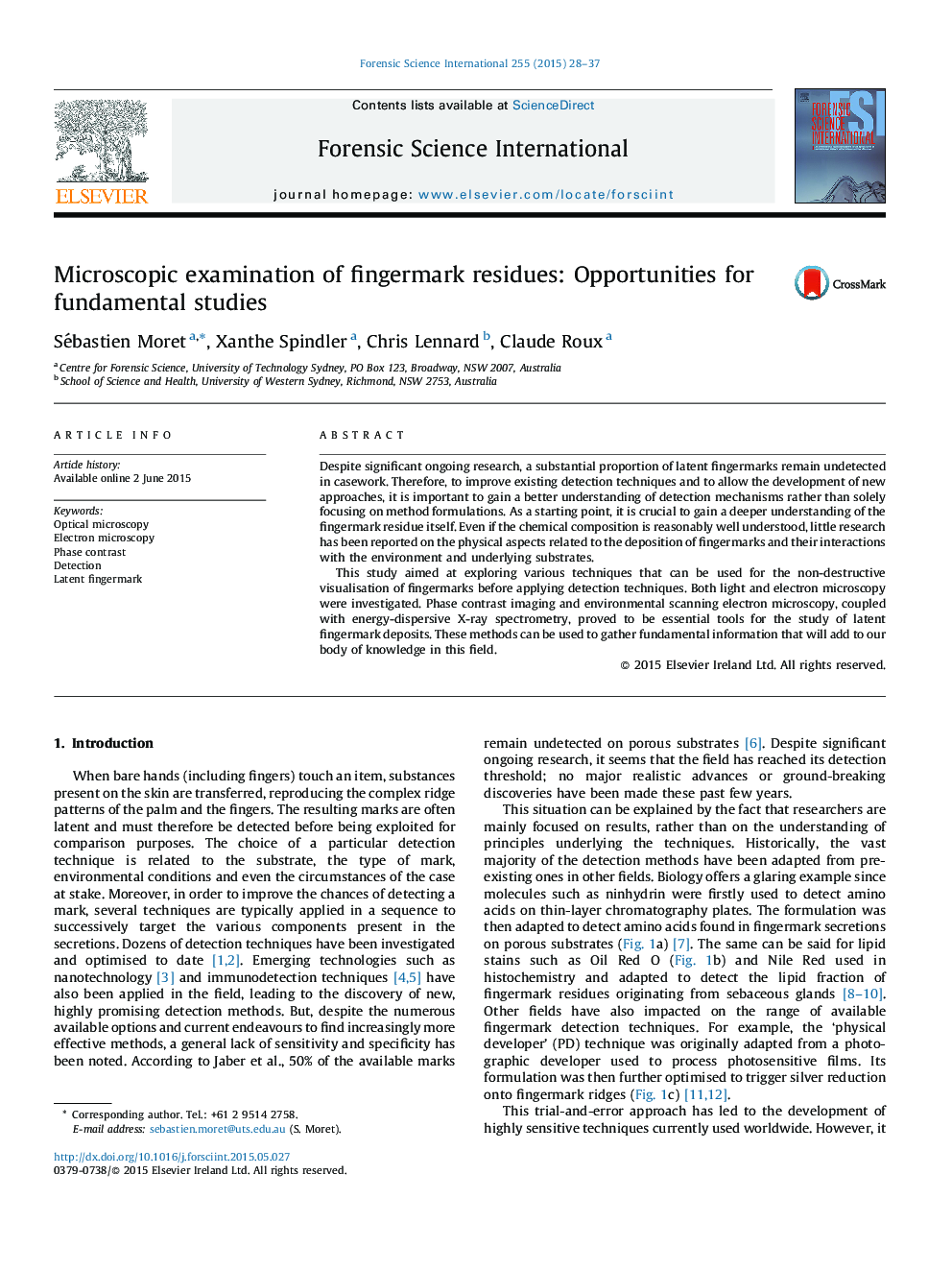| Article ID | Journal | Published Year | Pages | File Type |
|---|---|---|---|---|
| 95305 | Forensic Science International | 2015 | 10 Pages |
•Latent fingermarks must be studied from a fundamental point-of-view.•Phase contrast microscopy can generate valuable information on fingermark residues.•Scanning electron microscopy gives morphological and elemental composition insights.•The substrate has an effect on fingermark residue degradation over time.
Despite significant ongoing research, a substantial proportion of latent fingermarks remain undetected in casework. Therefore, to improve existing detection techniques and to allow the development of new approaches, it is important to gain a better understanding of detection mechanisms rather than solely focusing on method formulations. As a starting point, it is crucial to gain a deeper understanding of the fingermark residue itself. Even if the chemical composition is reasonably well understood, little research has been reported on the physical aspects related to the deposition of fingermarks and their interactions with the environment and underlying substrates.This study aimed at exploring various techniques that can be used for the non-destructive visualisation of fingermarks before applying detection techniques. Both light and electron microscopy were investigated. Phase contrast imaging and environmental scanning electron microscopy, coupled with energy-dispersive X-ray spectrometry, proved to be essential tools for the study of latent fingermark deposits. These methods can be used to gather fundamental information that will add to our body of knowledge in this field.
Graphical abstractFigure optionsDownload full-size imageDownload high-quality image (419 K)Download as PowerPoint slide
